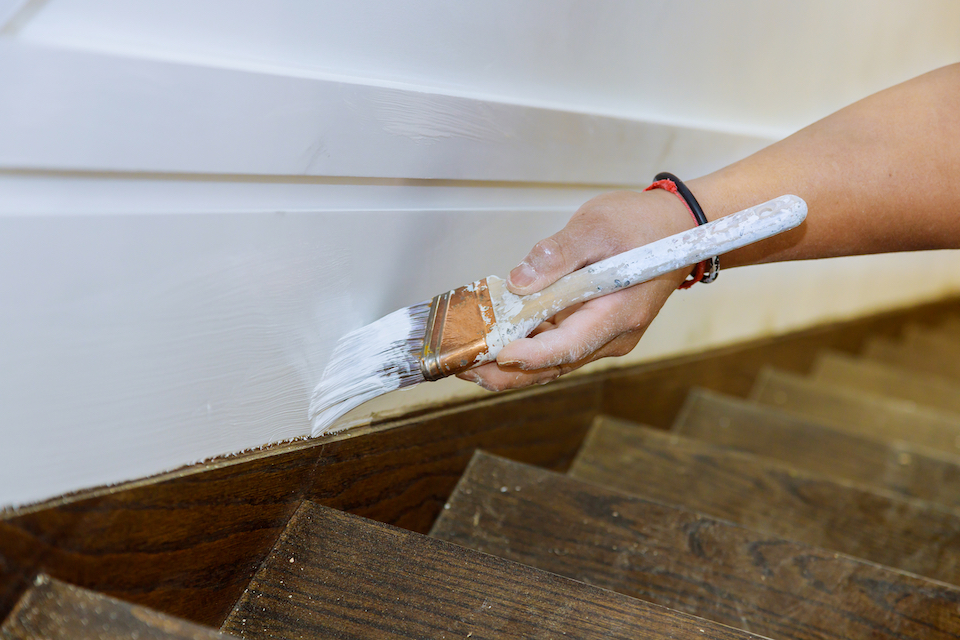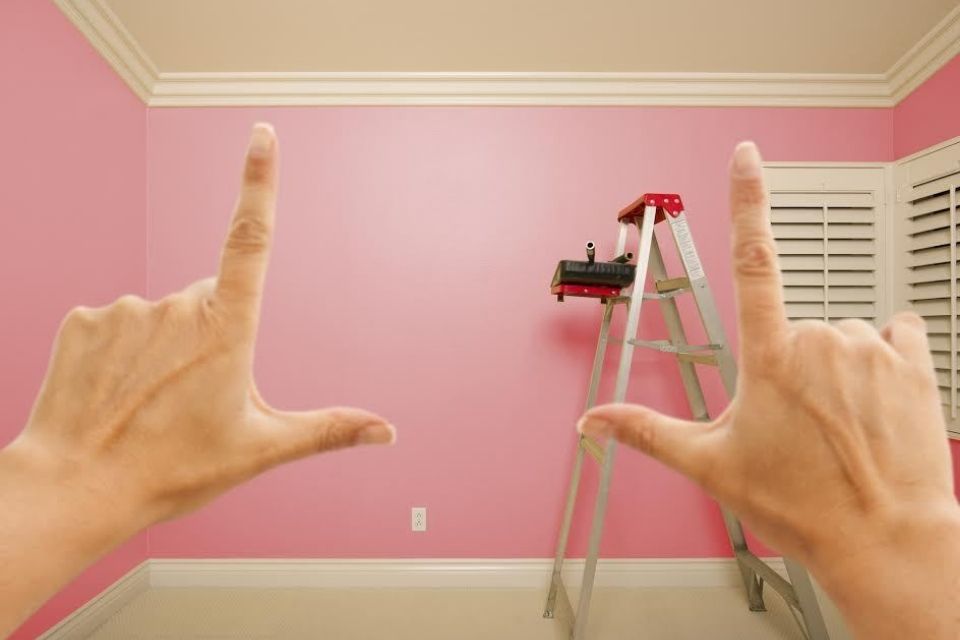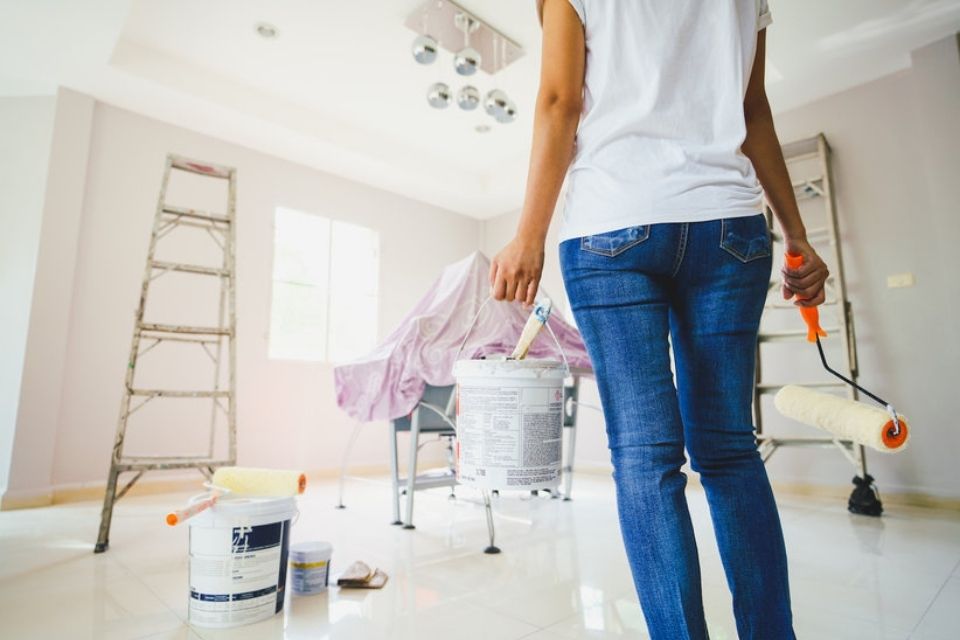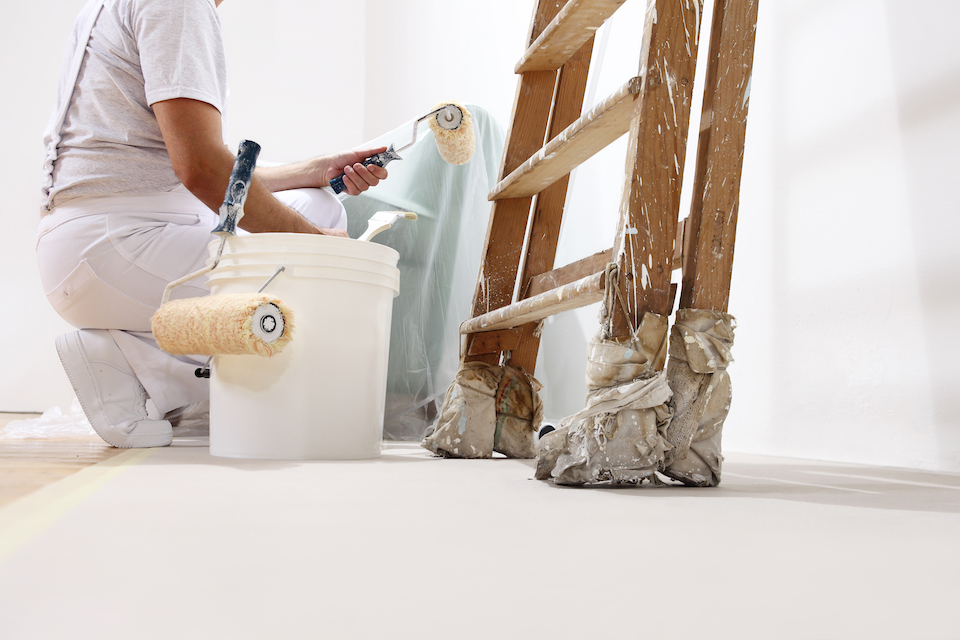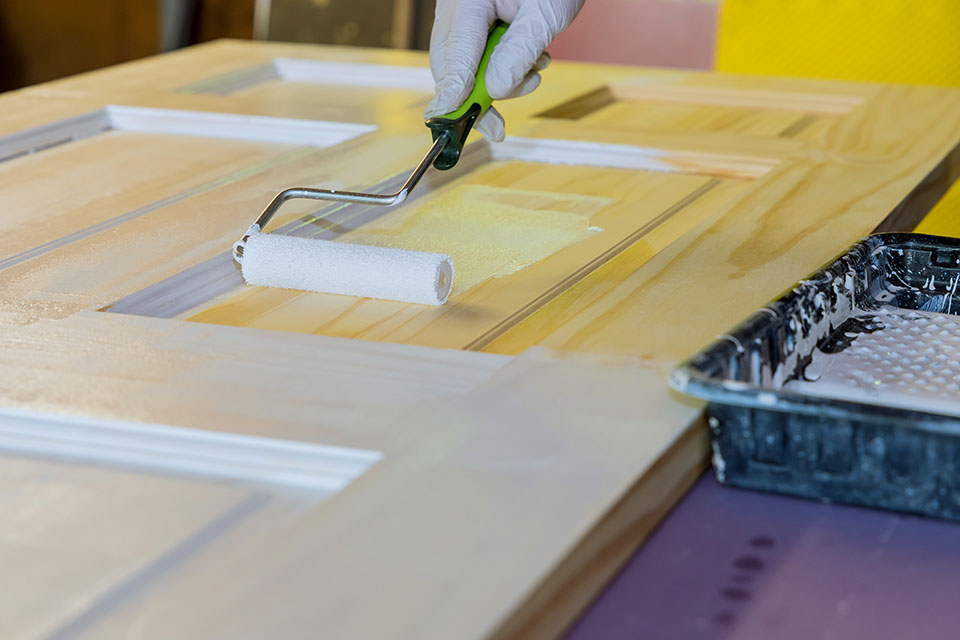How Much Does it Cost to Paint a Staircase?
The average cost to paint a regular staircase with minimal preparation is between £350 and £450, although this can vary depending on the size and style of your staircase, the type of paint you use and if you're calling in a professional.
So how much do you need to budget for with the staircase painting costs?
Priming as well as painting a stairway to an expert standard, complete with the handrails and balusters, will usually cost around £400 to £700 (based on a 63.5 m² stairway). Although this can potentially be as low as £225 if you're only painting a shorter staircase with a single colour.
Each staircase post will cost you between £10 to £56 on average. Most stairways have one or two posts at the bottom that range in height from 91 to 107 cm.
Posts are an essential component of a secure, aesthetically pleasing stairway. Stairway painting projects frequently include the painting of these posts.
Hand railings are often designed to span the entire length of the staircase, and cost around £13 to £39 per linear metre to have painted.
If the railing is being painted at the same time as the balusters, spindles, and risers, it may even be best to leave it until the end so that the staircase can be assembled and the task ahead of time.
Staircase Painting Prices
Do you want to paint your stairs but are unsure of how much it will cost? The following table provides a summarised break down of the above staircase painting costs:
| Job | Cost |
|---|---|
| Painting with minimal preparation | £350 - £450 |
| Painting and priming (incl. handrails and balusters) | £400 - £700 |
| Shorter staircase in single colour | From £225 |
| Staircase posts only | £10 - £56 each |
| Hand railing only | £13 - £39 per metre |
A few coats are required to achieve the desired nice, smooth colour. Because posts are smaller than walls and stairs, painters usually use a brush.
To avoid paint drips on the rest of the stairwell, painters must cover the surrounding area - although this is normally included in the cost.
Do you have one or even more staircases throughout your house that could benefit from a fresh coat of paint?
Suppose you're thinking about painting your staircase. In that case, you should be aware of how much you'd eventually wind up spending on this sort of project, particularly if you're debating whether to do it yourself or hire a professional painter.
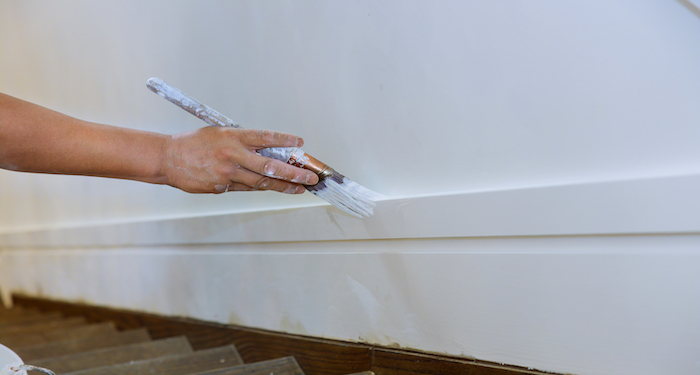
We can paint a clear picture for you here!
Here we will go over the costs of painting a staircase and when hiring an expert to paint your staircase, consider the various factors that may affect the overall cost.
Tradesmen Costs for Staircase Painting
Keep in mind that most painters start charging by the hour, so the more items that need to be painted, the longer it will take the painter to complete the job.
A professional painter can estimate the cost of a job by factoring in all aspects, such as the walls, treads, risers, posts, balusters, spindles, and stairways as well as ceilings that may or may not need to be painted.
The critical point to consider is the fee of a tradesman—a usual quote for hiring a painter range between £100 and £300 per day. Smaller painting jobs for staircases are typically charged at a lower hourly rate of £15 - £40.
Rates for tradesmen per day, on the other hand, range from about £150 to £300, with charges in London and the South-East occasionally approaching, if not surpassing, the higher amount.
Because paint must dry between layers, the paint used may influence how long each room takes to complete. Painters and decorators frequently collaborate on larger works.
The table below will break down the labour costs for painting a staircase:
| Labour | Cost |
|---|---|
| Average painter day costs | £100 - £300 |
| Painter hourly rates | £15 - £40 |
| London painters | £150 - £300 per day |
Hiring a single tradesperson may have seemed to be the most cost-effective option. However, this almost always means that the job will take more time, save little or no time, and, in some cases, cost more.
If you decide to hire a painter, then you will have advantages such as:
- Long-lasting, higher-quality results.
- They have a keen eye for the destruction that needs to be repaired.
- They have a keen eye for the destruction that needs to be repaired.
- They've been educated on how to stay safe on the job.
- They've been educated on how to stay safe on the job.
- They can complete the project quickly and effectively.
- You won't have to worry about your stairs because they'll be taken care of.
Additional work such as painting staircase spindles and painting staircase walls can add additional costs on the price of the job.
When you hire a painting company, you are paying for understanding, convenience, cost of labour, and a higher-quality painting job. Hiring a painting contractor to relieve stress is well worth the extra painting costs for some people.
You contractor may also be able to provide you with some staircase painting ideas to help bring your space to life.
Since many staircases parts can be painted, this must be considered when calculating the final cost.
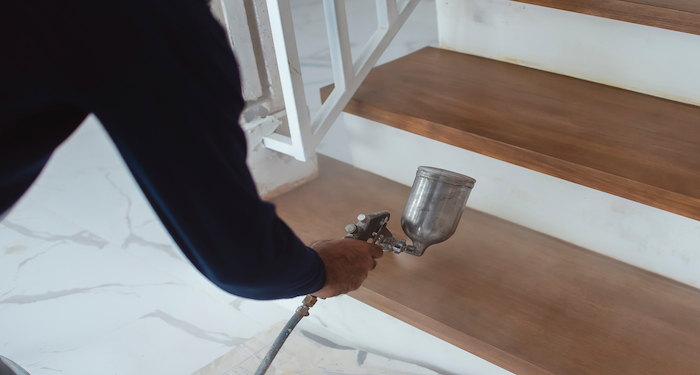
The staircase may or may not have walls, treads, stairs, posts, handrails, ceiling, spindles, and handrails. Because paint can cause stumbles when climbing the stairs, stair treads are rarely painted.
For this reason, they are rarely included in the cost of painting stairs. Each product can be painted individually later or as part of a larger project. In most cases, a painter will complete the entire paint job at once to ensure that the stairway looks its best when finished.
Over the phone, a painter will be unable to provide you with an accurate quote. They must inspect the current paintwork and determine whether there are any access issues at your home. Therefore, ask some questions to make sure you're ready for anything.
So, what factors need to be considered when looking for a skilful painter at an affordable price? You are free to offer to pay cash for any work done if you are not pressuring the painter to avoid paying taxes.
It usually means that you will not receive a receipt and, consequently, no guarantee for the service provided.
What are the Additional Costs of Painting a Staircase?
When having your staircase painted, you might decide that you want to have additional work done to your home or notice that other costs have added up to increase your overall cost. In this section, we will go through the different additional costs so you know what to expect.
Cost to Paint Interior Doors
Whether you're DIY or hiring a professional painter to do it, you'll need to begin by measuring everything which needs to be painted. For example, the average cost of painting an inner door is determined by the size of the door, the number of doors to be painted, and the local labour rates.
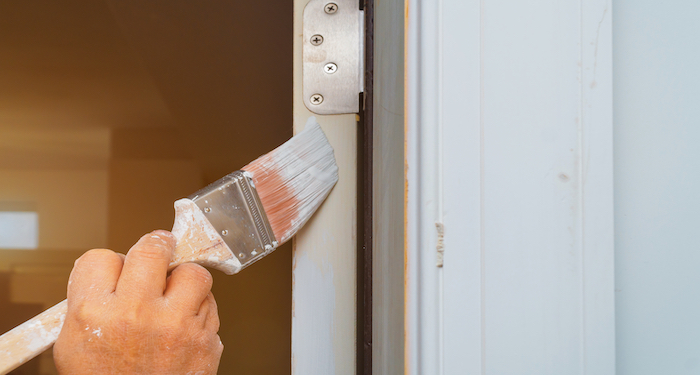
Most interior doors cost between £50 - £200 to paint. Doors that open to the outside, on the other hand, can be more costly, costing up to £200 - £300. The cost of glossing a door varies depending on what type of paint is used and the number of coats needed, but it should cost between £60 and £100 per interior door.
While you may be able to recoat some painted doors and achieve a satisfactory finish, you will not be able to save the paintwork on others.
You'll need to consider hiring a paint stripping or 'dipping' service to get rid of all that goopy, lumpy old shine—door stripping costs between £15 and £25 per door.
For more information, please refer to our guide on the costs of painting interior doors.
Painting and Decorating
When redecorating, consider how much interior painting will cost for different jobs. For more information, please refer to our guide on the costs of interior painting and decorating.
A typical quote for hiring a painter and decorator for important decorating works like painting or wallpapering many rooms ranges from £100 to £300 per day. Alternatively, they may charge for individual jobs as follows:
| Job | Average Cost |
|---|---|
| Painting a small bedroom | £180 |
| Wallpapering (small bedroom) | £180 |
| Painting skirting boards | £180 - £350 |
| Wallpapering (strip and hang) | £600 |
| Painting a large living room | £600 |
| Repainting kitchen cabinets | £600 - £1,000 |
| Painting windows | £400 - £1,500 |
| Painting doors | £220 - £1,600 |
| Inner cladding | £1,500 - £2,500 |
For smaller painting jobs such as painting door frames as well as kitchen cabinets, they may start charging £15 - £40 per hour.
If you're only painting a small bedroom, it should only take one day; however, if you need any wallpaper or paint eliminated, you'll need to add another day. The job usually takes three to four days if you want the tradesman to remove and substitute any furniture.
A two-bedroom terraced house can be redecorated in five days, a three-bedroom semi-detached house in seven days, and a five-bedroom detached house in fourteen days.
Painting House Exterior
For more information, please refer to our guide on the costs of painting the exterior of a house.
The cost of exterior painting is determined by the scope of the project. For example, painting a fence may only cost £100 to £340 whereas rendering the side of a house may cost up to £1,200.
Below is a summary table of the various external painting jobs you may want doing at the same time as painting your staircase:
| Job | Average Cost |
|---|---|
| Repainting garden walls | £100 - £320 |
| Repainting fences | £100 - £340 |
| Painting outdoor woodwork (incl. shed) | £100 - £350 |
| Painting decking | £120 - £430 |
| Painting external windows | £200 - £400 |
| Painting the outside of a house | £500 - £1,500 |
| Render painting | £600 - £1,200 |
| Painting soffits and fascias | £700 - £1,100 |
Although these are only average prices, as they can vary depending on factors such as the size of the property and it's location - for example, decorators in London and the South East charge more than in other parts of the UK due to the cost of living and travel expenses.
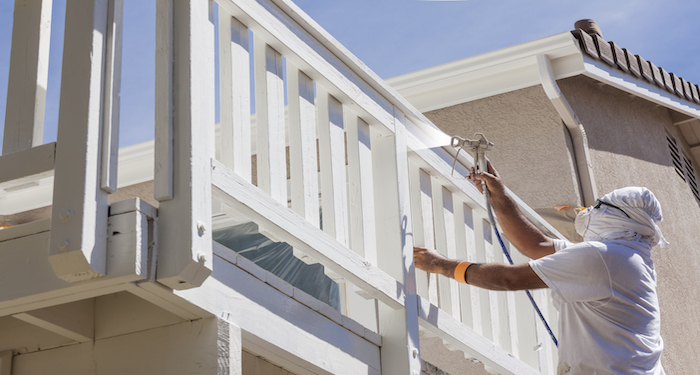
Size
Unsurprisingly, the bigger the staircase, the higher the cost of painting a staircase. Of course, this is not always the case, but a larger staircase will frequently necessitate more materials and will take a little longer to maintain than a relatively small staircase.
This, however, is unlikely to be a substantial financial consideration.
Duration
The time taken to complete the job may or may not influence the overall cost, and it depends largely on how the tradesperson works. In some cases, a contractor will be paid a lump sum upfront, and in others, they will be paid by the hour.
Location
The cost of living in your location will influence the cost that individuals or businesses set, as will supply and demand levels in your area.
Another factor to consider is how quickly nearby providers can arrive at your property. Their gasoline costs will rise as their route lengthens, increasing your total payment.
What are the Supply Costs for Staircase Painting?
There is no better place to start if you want to make a great first impression in your home than in the hallway. As the very first space you see when entering a house, a hallway is always in need of a makeover.
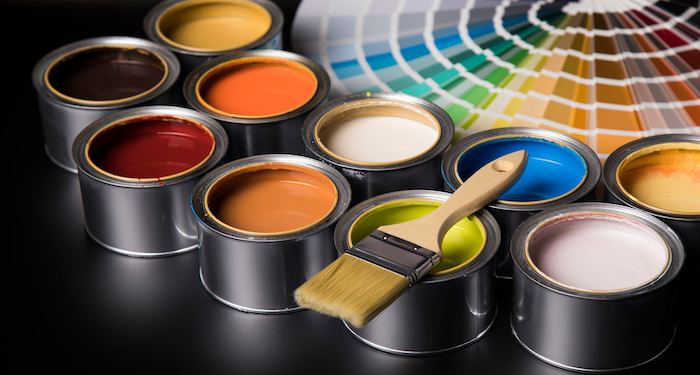
Giving the stairs and bannister a fresh coat of paint is a simple way to upgrade an entrance. Consider the following points if you want to build your own staircase.
Here we will go over the supply costs for painting a staircase. So, if you want to DIY the project, you will find everything you will need here.
You will need to buy a rust-oleum chalky finish floor paint. This will cost you around £12 per litre, depending on how much you will need. You'll also need a sander; electric sanders are by far the most convenient way to achieve a smooth, fine finish on your woodworking project.
Small sander machines provide a high-quality finish to furniture as well as craft projects, preparing them for painting or refinishing.
When bulks of material need to be removed, more effective tools use different motions to strip surfaces quickly and efficiently. This will cost you between £18 and £40, depending on the quality you desire.
You'll need a dust mask to keep from inhaling particulates from the materials you're working with. Face masks are an essential part of staying safe on the job site or at home while performing DIY tasks.
They are a low-cost, high-effective way of ensuring you don't breathe anything hazardous. They cost £3 - £23.
You will need a paint scraper; this will cost £4 - £10, depending on the brand. Wood filler to fill any gaps will cost £4 - £12. With the correct paintbrush or sprayer, you can make your painting project look fantastic.
The right paintbrush or sprayer for the job can make all the difference. A paint sprayer will cost between £30 and £46, and paintbrushes will cost between £6 and £15.
The paint for your staircase will cost you £20 - £40 depending on the brand and how much you will need for the job.
The table below will break down the supply costs to paint a staircase.
| Supply | Cost |
|---|---|
| Rust-oleum chalky finish floor | £12 per litre |
| Small sander machines | £18 - £40 |
| Dust mask | £3 - £23 |
| Paint scraper | £4 - £10 |
| Wood filler | £4 - £12 |
| Paintbrush | £6 - £15 |
| Paint spray | £30 - £46 |
| Staircase paint | £20 - £40 |
While it may appear simple, there are a few difficulties you may face while painting your stairs. Here we will discuss some things you should consider before you start painting.
- Time – You should expect to spend a significant amount of time trying to paint your staircase. You'll probably have to paint each surface individually and work on it over several days.
- Game Plan - – It is all too easy to get caught up in the middle of a job. To avoid ruining your work, make sure you know the order in which you're painting each surface.
- Risks - Painting staircases can be dangerous due to the heights involved. When necessary, use a ladder properly, and follow any other health and safety suggestions.
Here are some additional tips:
- Begin early in the morning - When the rest of the family are out, in the garden or busy downstairs and won't need the stairs for a while. Alternatively, try painting the stairs when the children are at school or after they've gone to bed.
- Allow enough time - You should give enough time for the paint to dry completely before walking on/near it. Because the longer you let it dry, the more durable it will be. You'll need to plan around the fact that your only toilet is upstairs.
- Paint sequentially - Beginning at the top and working your way down. Based on where you want to end up, you don't want to be stuck on the wrong floor. This may seem obvious to do, but it is easy to be caught off guard.
How Long Does It Take to Paint a Staircase?
Once you've decided to give your staircase a fresh coat of paint, you may begin to wonder, "Do I have the time to complete such a time-consuming task?" or "Can I do this any faster?"
The solution to the first two questions is yes; painting your staircase is not really something you can do yourself, but it may be a task that is easier than you think. Painting stair spindles can be divided into four steps:
- Cleaning
- Sanding
- Painting
- Primer application
It's up to you whether you want to repeat these steps as a mantra as you work; it may give you extra motivation to keep going. Here we will go through the duration to paint a staircase so you know how much time you should put away for this task.
It takes about 8 hours total, spread out over four days.
Taping the areas all around the staircase to help the rest of the balustrade from unintended paint drops usually takes two hours. The staircase requires three coats in total, depending on the colour; your spindles may require less.
The first coat usually takes three hours, the second coat two hours, and the final coat only an hour because all that has been needed is a touch-up.
The table below will break down the duration to paint a staircase:
| Job | Duration |
|---|---|
| Painting a staircase | 8 hours over four days |
| Taping the areas and painting | 2 hours |
| First coat | 3 hours |
| Second coat | 2 hours |
| Final coat | 1 hour |
Types of Staircase Paint
Painting the staircase is a great way of converting your hallway, as well as being a great project for inexperienced DIYers. Most staircases are made of wood, which lends itself well to painting, so what are the best paints for stairs?
When you are painting your stairs for the first time, there are some important rules to follow to make sure that the final product meets your expectations.
Selecting the perfect paint for your stairs is also critical if you're buying a carpet runner and stair rods or bars to maximise the appearance of your staircase. Nothing is worse than installing beautiful runners and bars on stairs that were poorly painted or painted with cheap paint.
Whenever it comes to painting the stairs, floor paint seems to be the best option because it is very durable, cleanable, and stain-resistant, or a high-quality matt or high shine emulsion. Floor paints come in a variety of colours; make sure to select one that is appropriate for wood floors.
It's worth investing in a decent quality brush for your stairs because it will make painting the edges well easier and will leave fewer brush marks, giving you a better overall finish.
Here we will go through the different types of staircase paint and their pros and cons, so you know what to expect and figure out what type of paint is best for you!
Slip Resistant
Stairs benefit from a long-lasting, slip-resistant porch or floor paint. However, if you intend to use standard latex paint, coat it with several coats of water-based polyurethane to enhance its durability.
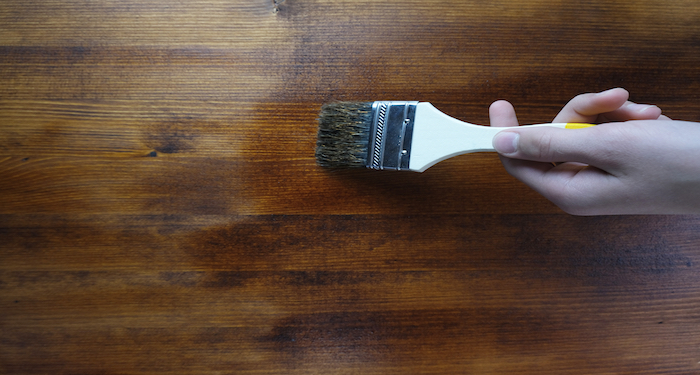
Oil-based polyurethane lasts longer, but it yellows with age, tends to take longer to dry, and generally includes more chemicals, which means more fumes.
Wait a couple of days after painting before using your stairs. If you can't wait, finish only every second step that week and the rest the second week; mark the functional treads with painter's tape, and be prepared to carry any young children or pets up and down as needed.
Pros
- Long-lasting
Cons
- It takes a while to finish
- More chemicals
- It can go yellow
Gloss
Paint sheen is just as important as colour. High-gloss paint is much more washable as well as durable than matte paint, but it emphasises flaws. Choose semi-gloss paint unless you intend to sand the stairs sleek and prevent them from high-heel scuffs or pet-claw scrapes.
If you aren't using floor paint, add paint traction rubber grit; mix it into the paint or sprinkle it onto each step between coats. The sand-like rubber is more comfortable on bare or gloved feet than other types of grit, like aluminium oxide.
Pros
- Washable
- Durable
Cons
- It can feel gritty
Coloured Paint
Dark treads hide wear and dirt, whereas light risers add visual definition. Colour cues can be found in the railings, like matching the stairs to a stairway and the handrails to spindles.
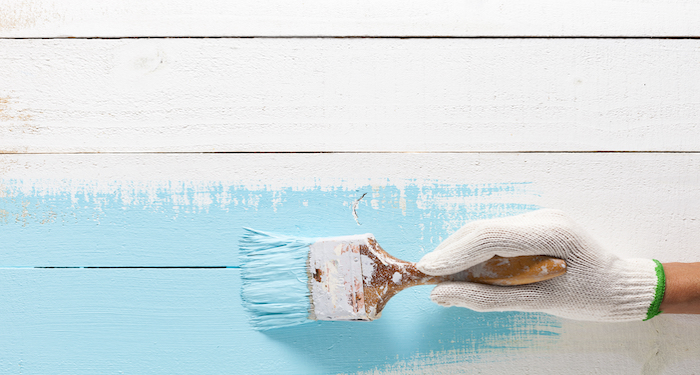
Alternatively, scan the surrounding decor colours and choose black and white, dark grey and pale grey, or brown and beige stairs to match the room's current flooring or colour scheme.
If you want, you can blend open-design stairs (those without risers) into the background by painting them to complement the surrounding wall colour or put an appealing stairway on display in a contrasting colour.
Consider the stairs to be a blank canvas if your design choices include bright colours, wildly vivid abstract art, or hipster edginess. After deciding on stairway artwork, paint the stairs and risers a complementary base colour.
Set your creative side on just the risers, for example, by stencilling or painting meaningful words in an appealing font.
Alternatively, use three, four, or more standout colours to create a floral spiral, geometric "waterfall," or scenic pathway on the entire stairway. Anyone can become an artist with the help of stencils and stamps.
Pros
- Dark hides wear and dirt
- Lightens room
Cons
- Not suitable for everyone
FAQs
Q: What type of paint is best for a wooden staircase?
A: Semi-gloss or satin paints have been typically preferred for risers, but they can be hazardous when used on stair treads. When possible, use floor paints because they are non-slip and much more long-lasting than other types of paint.
Q: Is it hard to paint a staircase?
A: To ensure a long-lasting, tough finish, use suitable floor paint when painting stairs. Select a water-based floor paint that can be put directly to wooden floorboards, concrete flooring, and over existing paint or varnish.
Q: What prep is needed before painting a staircase?
- Step 1: Examine for Nails and Place Dust Sheets
Cover any surrounding areas with dust sheets before beginning any work on your stairs. If you are painting your stairs for the very first time and previously had carpet, check for and remove any nails or staples. After this, use a paint scraper to remove any loose paint and sweep the stairs.
- Step 2: Stairs Should be Sanded
You'll need to sand your stairs to get the best finish. The stringers - or sides - are usually already painted. If this is the case, depending on their condition, you can sand them with medium to fine sandpaper. A 120-grit sandpaper should suffice.
If the treads as well as risers - the steps - are not painted, they must be sanded with coarse sandpaper (80 grit). Using an electric hand sander will speed up and simplify the job; when you're finished, clean or vacuum the stairs to remove any dust.
- Step 3: Plug Holes
Now, search for any holes or areas that need will need to be filled, and fill them with a high-quality wood filler like Ronseal High-Performance Wood Filler. Small gaps between treads and risers are common on older stairs. Fill in the blanks to complete the look.
Once the filler has dried, use fine-grit sandpaper - 180-220 will suffice - to smooth out the stairwell. Check the sanded areas with your fingers to see if they are smooth enough. If not, try again.
- Step 4: Clean the Stairs of Debris and Dust
To begin, sweep or vacuum the stairs to eliminate any dust. To remove any debris and dust, use warm water, a mild cleaning detergent (washing up liquid will suffice), and a clean cloth (you can also use sugar soap). Allow the stairs to dry completely after washing. Allow at least 24 hours.
Q: Should you paint with a brush or a spray?
A: You should spray one side of the stair treads while leaving the opposite side unpainted so that you can always get up and down the stairs.
When that side is dry, you could move on to the other. I apply at least two coats of paint to the stairs to provide a protective layer.
Q: What paint is the best?
A: While any wood paint can be used, those designed for floors are the best because they are more durable. Of course, it must be walked all over. If you do decide to paint the wood, a satin finish may be more forgiving.

